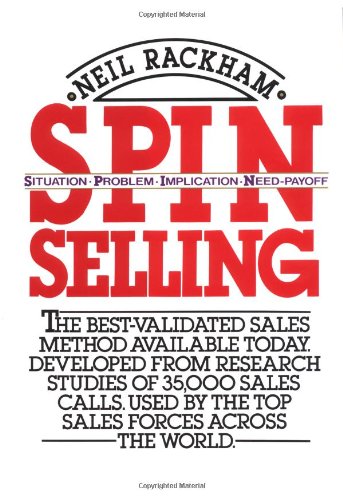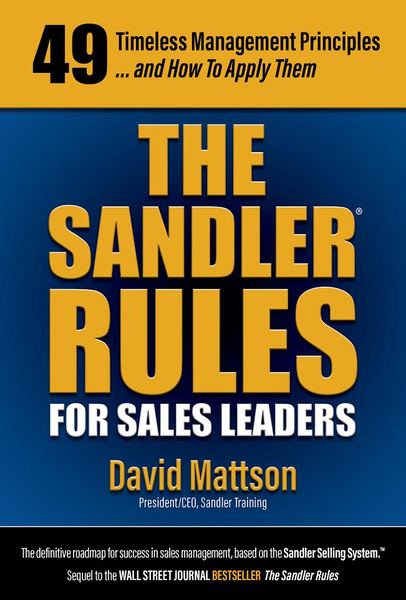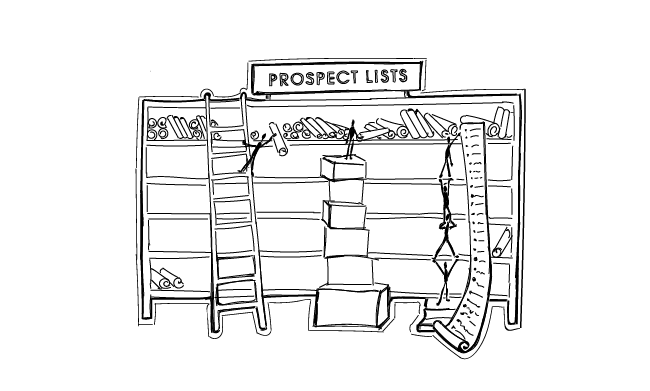List building is the outreach phase when we should learn as much as we can about our prospects so that we know what to put in our cold email copy. But what if we don’t know what type of information to look for besides simple facts, such as company name, size, the number of employees, etc.? How to structure the research process to squeeze out the most of it?
Well… we can turn to traditional sales techniques that teach beginning sales reps the ways to approach a potential customer. Basically, those methods feature a list of interview questions one should ask the prospect to persuade them to buy. But what if we could use some of those questions during list building?
You may be skeptical about using those methods. For starters, they were developed in order to establish a meaningful dialogue with the prospect on the spot. Cold email prospecting, on the other hand, is a process that can’t be handled on the go. It takes way much time. You don’t interview your prospect directly but dig through the well of information you find online. That can be a company website, social media profiles, review sites or YouTube videos. However, having the right questions in mind, you know what to look for.
We could accomplish three things. It would help us make certain that the company we’re targeting is a good fit, personalize the copy and follow-ups and lastly, we would know how to approach the prospect after you receive a positive reply.
What selling techniques can we use for prospecting?
I’d like to tackle two selling techniques that can ease the prospecting phase for you. I’m sure you’ve heard about them. They are rather popular when one looks for guidebooks about sales.
SPIN selling method
The first sales method is a SPIN strategy developed by Neil Rackham in the late 80s.
 SPIN selling focuses on high-value sales. In such sales, the buying process is longer than usual. It is so also for cold emailing. SPIN is an acronym. Every letter represents a different category of questions. ‘S’ stands for Situation, ‘P’ for Problem, ‘I’ for Implication and ‘N’ for Need-Payoff.
SPIN selling focuses on high-value sales. In such sales, the buying process is longer than usual. It is so also for cold emailing. SPIN is an acronym. Every letter represents a different category of questions. ‘S’ stands for Situation, ‘P’ for Problem, ‘I’ for Implication and ‘N’ for Need-Payoff. Traditionally, a sales rep, instead of singing praises about the offering, asks many questions and attentively listens to the answers their prospective buyers give. In the prospecting process though, we won’t be asking our prospects any questions. We will use the questions as a guide as to what kind of information we would like to find online.
The Sandler rules
The other sales method is Sandler’s selling system. Although it wasn’t written with a cold email in mind, we can distill some lessons about reaching out to prospects via email too. Similarly to SPIN selling methodology, it focuses on asking a prospective buyer a bunch of questions to see if they’re a good fit in place of pitching your solution to them.

David Sandler developed his selling technique in 1967 and it has been taught around the world ever since. I will describe Sandler’s selling methodology based on the book “49 Timeless Selling Principles… and How to Apply Them. The Sandler Rules” adapted by David Mattson.
This method teaches salespeople to ask such a kind of questions which would qualify the prospects immediately. But it mostly focuses on listening to the prospects. For that reason, some jokingly say that it’s a method of selling that makes a prospect sell your solution to themselves.
In Sandler’s method of selling, you ask, “How long has X been an issue for you?” or “What have you tried to do to fix X?”.
The mentioned book also gives out 49 rules mentioned in the title that focuses on showing a prospect how to approach each sale and what to learn from it — all enriched with possible scenarios of a conversation between a sales rep and an interested buyer.
How to adapt selling techniques into prospecting?
Before we jumped into anything. I want to quickly point out that we cannot copy and paste all those questions during our cold email list building phase. We need to adapt them to match the context we find ourselves in. And the context is… we’re doing the search in preparation for cold email outreach.
We haven’t reached out to the prospects yet. We’re planning on doing that. And in order to create a personal and original email copy, we want to know as much as possible about our prospect base.
SPIN selling
Let’s examine the possible questions we can seek the answers for through the categories they fall into.
‘S’ for Situation
A situational type of questions aims at discovering “facts, information, and background data about the customer’s existing situation.” Those questions can be subdivided into three types of questions.
- questions about the company
What kind of business is it?
Who’s their customer?
Is the business growing?
How many people do they employ?
Do they hire new people?
- questions about the decision-maker at that company
What’s their position?
Do they work autonomously?
How long have they been there?
Do they make the purchasing decisions?
- questions about the way the business operates
What kind of tools do they use?
How long do they use them?
Who uses them?
How many people use them?
Do they need to automatize some of their processes?
How old is the department they’re working in?
Those types of questions are perfect when qualifying somebody as an ICP. Be mindful that the list is in no way exclusive. You can add your own questions or cross out some of them.
‘P’ is for Problem
The exemplary question that tries to uncover problems “probes for problems, difficulties, or dissatisfactions” that the prospects may experience. In the book, you may find those examples of problem questions:
Are you satisfied with…?
Do you have quality problems?
Is your existing process painful?
They are harder to discover while conducting online research. You can look at online review pages to see whether your prospects were asking around for recommendations and what not.
They’re also perfect to keep in mind when writing copy. And use them there to establish a link between our business offering as the solution to a prospect’s problem, as well as establishing the topics both of you will cover during your future conversation.
‘I’ is for Implication
Implicational questions are the ones that try to uncover “the effects, consequences, and implications of the customer’s problems.” With those group of questions, we try to make the prospect think about the consequences of leaving the problem unsolved. A typical implicational question looks like this one below.
How has the problem impacted you?
It’s hard to assume something like this from what you can find online about the business you want to target. However, you may keep that question in mind while trying to review the prospect’s website and social media profile. You’ll be able to spot some inconsistencies while personalizing your business offer to them. Flip the question to think about the benefits your solution may bring about.
‘N’ stands for Need-Payoff
The last set of questions are the ones “about the value and usefulness of a proposed solution.” In other words, they prompt a prospect to think about the positive value that your offering may bring them. Here are some of them.
How would that help?
What benefits can you see?
Is it important for you to solve this problem?
Why would you find this solution so useful?
Is there any other way this could help you?
It may be useful to think of questions like that when following up with the prospect. With that, you’ll make them re-examine their current processes, possible improvements and putting the solution you offer in some perspective. It may persuade them to consider your offer, and when coupled with some benefits of your product/service, they may see value in your cooperation.
Sandler’s method of selling
In the book that we’re talking about, we have 49 rules of sales divided into 3 parts. The first one represents core concepts, the second one, their application while the third part is there to remind us of the principles. But it is the second one which is the most interesting for us here.
Although the whole guidebook is worth reading if you want to improve your selling abilities, my personal favorite is Rule 8. As I see it, it clearly shows what cold emailing is about. It reads “when prospecting, go for the appointment – don’t try to give your entire sales pitch.”
I interpret this like that: don’t recite your whole sales pitch upon the first time you’re interacting with someone, be it personally or via communication tools such as email. Try to listen to your prospects first to test the grounds whether your assumptions are correct or they need some revision.
Keep that in mind when writing a copy. You don’t need to close the sales in your first cold email. Nor will you be able to. What you will do though is make your prospects angry and distrustful, and thus, fail your email outreach.
Always ask the questions first and try to get to know your prospects.
What’s in it for you?
I hope that this inspired you to find a structure for your list building process. You can come up with a list of questions to check your prospects and their businesses against. We don’t need to think about totally new and innovative ways of doing that. Sometimes old and trusted methods can serve as a springboard for new ways of improving something.
READ ALSO

How to Manage a Sales Team to Make Prospecting Predictable?
Outbound emailing requires a lot of research into a target group and A/B testing before it can take off and become truly predictable. It's not unusual that a sales team (ours included) loses its motivation before that happens. Either that or they lose focus and target prospects ad hoc, just to get their numbers right. There is something that helped us. It is a proper goal setting.

3 Ways to Get a Quality List of Sales Leads
Question: Is there a golden way for getting a quality contact list of sales leads? The answer, sad but true: No, there isn't. But there are at least three good enough ways worth trying. All of them have their pros and cons. Not all of them will match your particular process of generating sales leads. The key is to choose those that work best for you and your company. Here's a short analysis of the three ways to help you decide where to start from.

3 Resources that Will Help You Ask Better Questions
Sales articles are full of advice on how to skilfully ask questions during sales interview. That's not surprising. Questions are the exact thing that helps us move potential leads through the sales funnel. Cold callers use them during discovery calls and those who prospect might use questions while looking for the ICPs. But how to apply it to cold email senders who have just begun the conversation? Here I gathered 3 resources that will help you learn how to perfect the art of asking questions.

